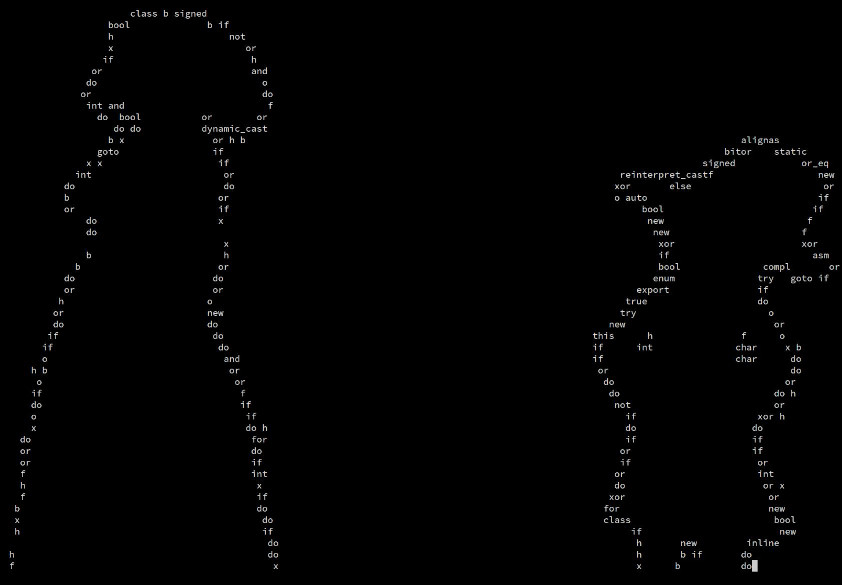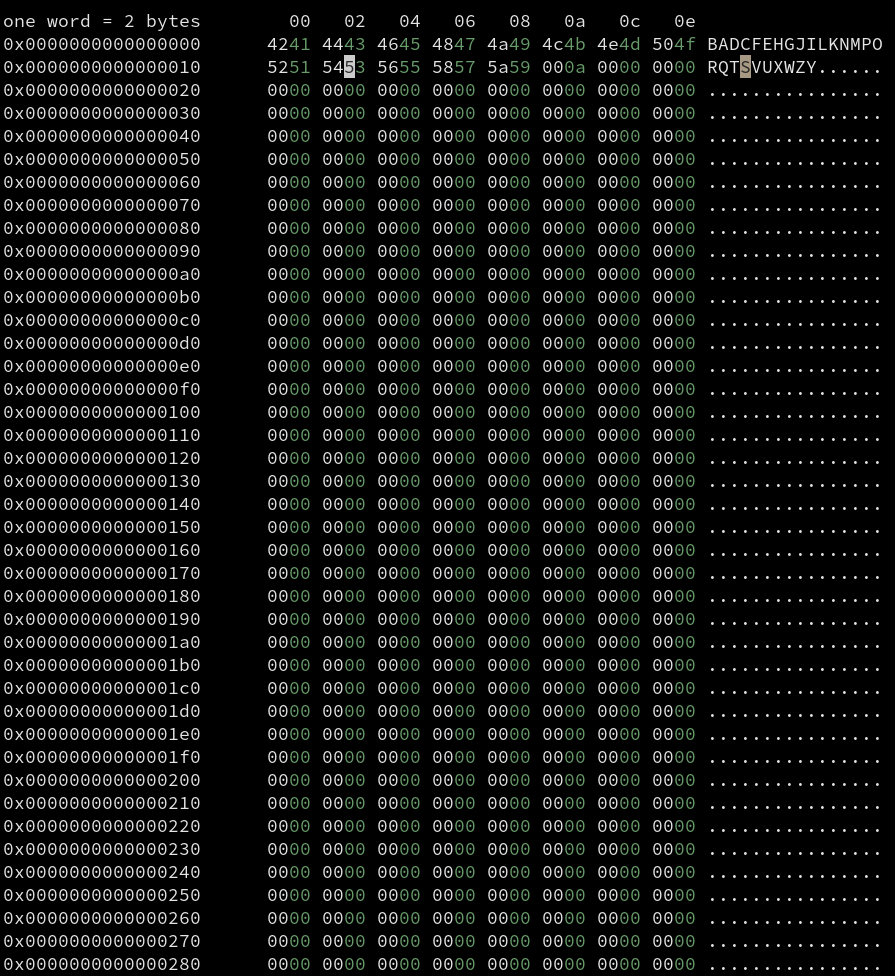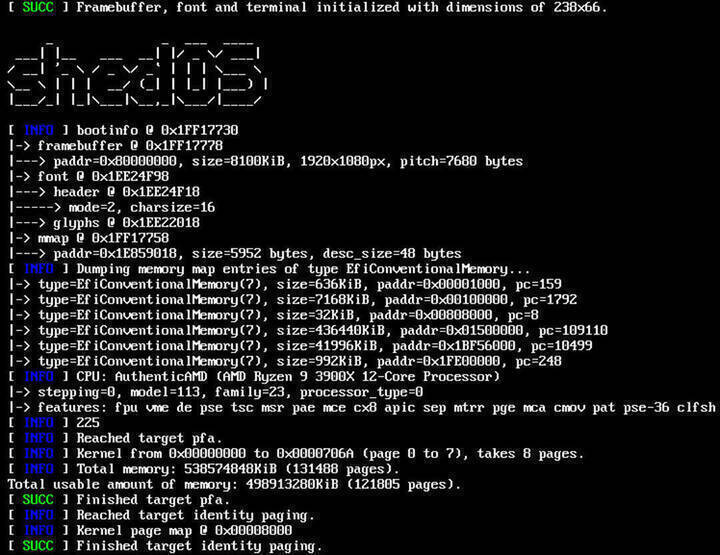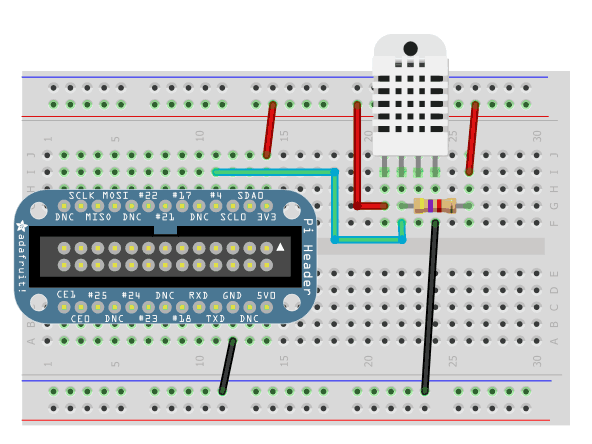
This list is by no means exhaustive or complete, but should give a
rough outline about how I spend my programming time and efforts. If you
are interested in projects summaries instead of detailed description,
check out the corresponding github repository. Most of them (should)
include a README.md which gives a nice overview of the
project and how to build it.

ascii-render is a small Rust program that takes a GIF and token file and renders the GIF in real-time using the tokens specified in the token file. It is simple and the result for one example video that has been done a million times already can be seen here.

raytracer is, as you might have guessed already, a simple ray tracer written in Rust. It is a follow-along implementation project of the great “Ray Tracing In One Weekend” series.

vex is a simple hex editor with vim-like bindings for easy navigation. It currently supports browsing a file, editing individual bytes and saving the file with plenty of movement commands already implemented. It is very lightweight, only using a TUI based on ncurses. Althought it is already usable, I plan to add a way to insert new bytes or delete existing ones as well as more advanced ergonomics like visual (block) selection.

shedOS is an x86_64 operating system I am currently developing, mainly for educational purposes. Working in kernel space without being able to rely on things we take for granted when working in userspace like memory allocation, process management, multitasking and more is an experience that really deepens one’s knowledge of how exactly operating systems manage resources and their internal workings.
The OS is written in C as it is the lingua franca of low level system programming. It basically translates one to one to assembly and has minimal dependencies so it allows for easy development of freestanding applications using options and custom toolchains. We basically create a freestanding 64-bit position-independent elf executable containing all the kernel code, linked at the higher half. This will then be copied to a partition containing an echfs file system on a .hdd file where we will also install limine, the bootloader. Limine directly puts the kernel at the higher half, sets up long mode, necessary paging and jumps to the entry point. This disk image can be attached to your virtual machine of choice (I use QEMU) and limine will boot the kernel.
All of those steps, including the cross toolchain itself, are defined as Makefile rules for easy compilation and execution. You can find the github repository here and detailed descriptions below.

Voxel game is the prototype of a 3D voxel renderer/*craft clone. It currently supports procedural terrain generation and texturing with biomes and caves, first-person movement and block breaking/placing. A simple UI is provided as well as a working inventory and clouds, including a skybox. Simple diffuse lighting is implemented as well. The project currently lies dormant, but we might pick it up again some time later. Because it’s quite large, it has a lot of dependencies like Freetype, Assimp and libnoise. You can find a full list as well as build instructions in the repository.
xanim is a simple animated wallpaper manager for X11. It works by creating an SDL2 render context from the root window (aka the ‘background’) and then blitting a series of images to it. The images are obtained from a video file which is read and parsed using OpenCV. You thus need Xlib, SDL2 and OpenCV to be able to successfully compile the program.
I have measured the performance on my laptop (16GB RAM, i9 10510H) with a 1080p video and after loading it consumes on average < 1% of CPU time. RAM could be a problem tho as every image is loaded without compression and stored in RAM instead of VRAM. I have yet to figure out how to store the images on the GPU to solve this problem but w/e, just don’t use videos larger than a few Gigs and you should be fine.
This method of rendering unfortunately doesn’t work too well when using a composite manager such as picom or compton. They draw to an external buffer and then blur all the windows together to achieve their result. If you know of a method to make it work in this case, please let me know!
I use my Raspberry Pi 4 for a lot of things, one of them being recording climate data. The DHT 22 is a low-cost, low-power humidity and temperature sensor.

It is easy to set up and can be read through the adafruit DHT python library based on which I have written a simple script. The Pi 4 also runs a mongo database which stores the humidity, temperature and date. A new document is inserted every 5 minutes. Plans for the future include an express.js-based API for accessing this data and filtering for maximum and minimum temperature/humidity.
I prefer simple and static layouts to dynamic ones requiring client-sided JavaScript. This is why the great majority of pages are written in simple Markdown and then fed through pandoc to generate HTML documents. Although Markdown is not a clear standard and lots of dialects exist, pandoc takes almost everything as input and produces a valid output document. For instance, if I need to add a table or grid of images to my documents, I can revert to writing plain HTML in the Markdown file and pandoc will happily accept this.
To make compilation of files easier, I make use of a single Makefile that
.md files in the markdown
directory to .html files and copies them to the
html directoryres directory down to an
appropriate size so I can put lots of images on a single page without
taking up too much bandwidthIn addition, resources embedded in newer pages link to the full-sized resource which I do not store in the repository for obvious reasons (a single image can be well over 20MiB, now imagine dozens or even hundreds of them on a single page…).
I chose not to include navigation headers and footers for now since I assume people casually browsing this site start out from the main page and can navigate backwards using their browser on their own and people who land on a. specific site are not always interested in anything else (if they are they can still navigate to the main page on their own). I might add this in the future though.
Various services are also offered on different subdomains:
Me and my friends use Discord for communicating. Discord offers lots
of features out of the box like free servers, video chat and stream
capabilities as well as sophisticated user, role and permission
management. But sometimes there are features we want or need which are
not provided per-default. Fortunately, discord offers an API to allow
developers to create a bot user which can read and send
messages, do administrative tasks and even play audio. One can use
discord.js, a Node.js javascript binding allowing to easily
create such a bot. The repository for our bot can be found here. It
currently allows you to
The great thing is that there are lots of Node.js bindings for APIs so one can quickly implement features without needing to mess around for hours. I will probably add more features in the future as I see fit, maybe even something like a chess engine or a word guessing game. The possibilities are endless!